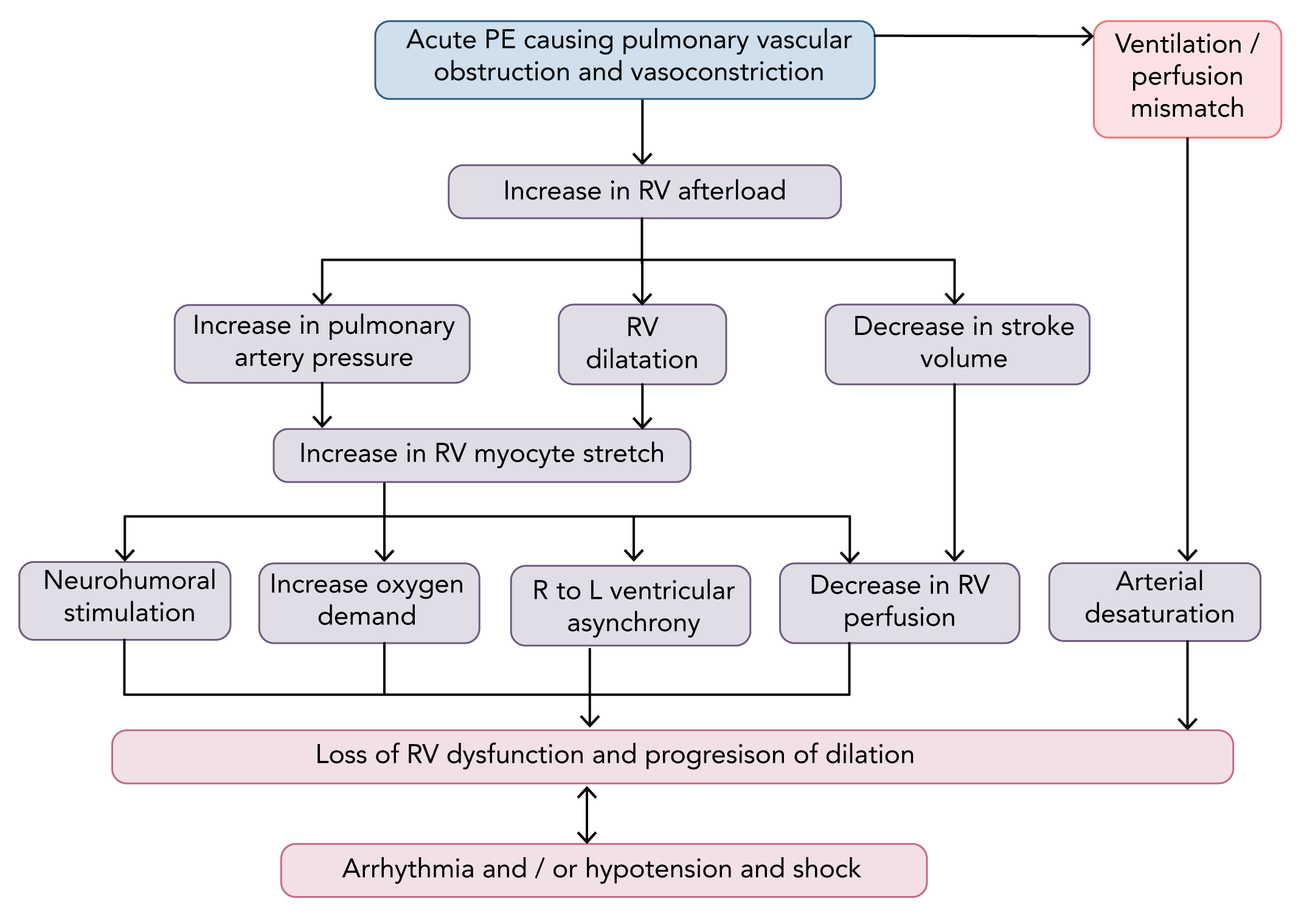- PE can lead to right ventricular (RV) failure due to acute pressure overload:
- Pulmonary artery pressure (PAP) increases in the presence of obstruction
- Becomes evident if >30-50% of the total cross-sectional occluded by thromboemboli
- Obstruction due to:
- Mechanical obstruction from clot burden
- Vasoconstriction, mediated by the release of thromboxane A2 and serotonin
- Results in increased RV afterload and subsequent dilatation:
- Initial compensation occurs via Frank Starling mechanism with increased myocyte stretch
- Neurohumoral activation leads to inotropic and chronotropic stimulation.
- RV adaptation is limited and is unable to generate a mean PAP >40 mmHg
- Ventricle non-preconditioned and thin-walled
- Enters cycle of progressive RV failure with imbalanced oxygen supply / demand and decreased contractility
- Progressive impact on left ventricle (LV) and systemic circulation:
- Bowing of intraventricular septum impairs LV filling
- Further exacerbated by development of right bundle branch block
- Leads to reduced cardiac output and systemic hypotension
- Exacerbates impaired coronary driving pressure to the overloaded RV and further imbalances myocardial oxygen supply and demand
- May be a secondary inflammatory response due to massive neurohumoral activation

